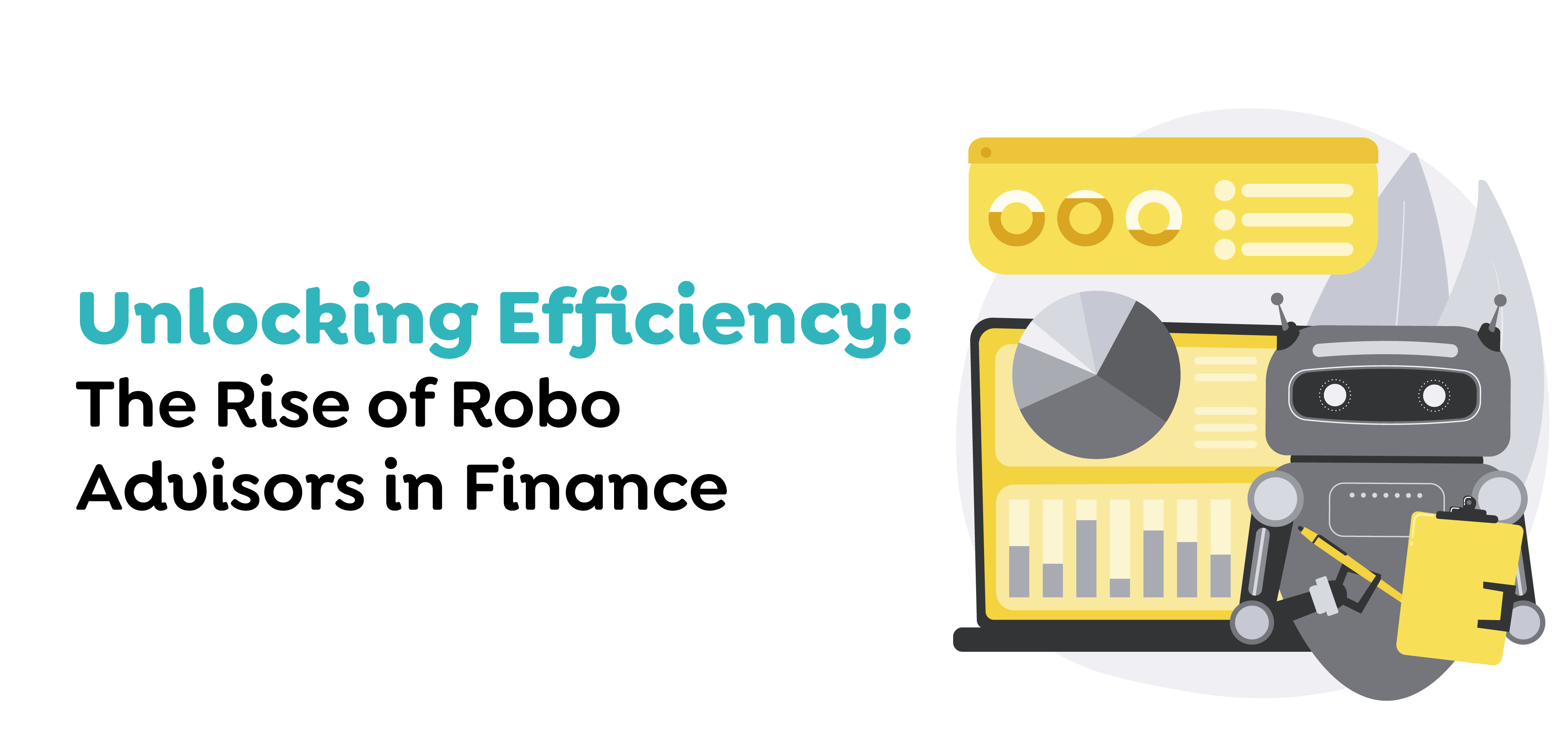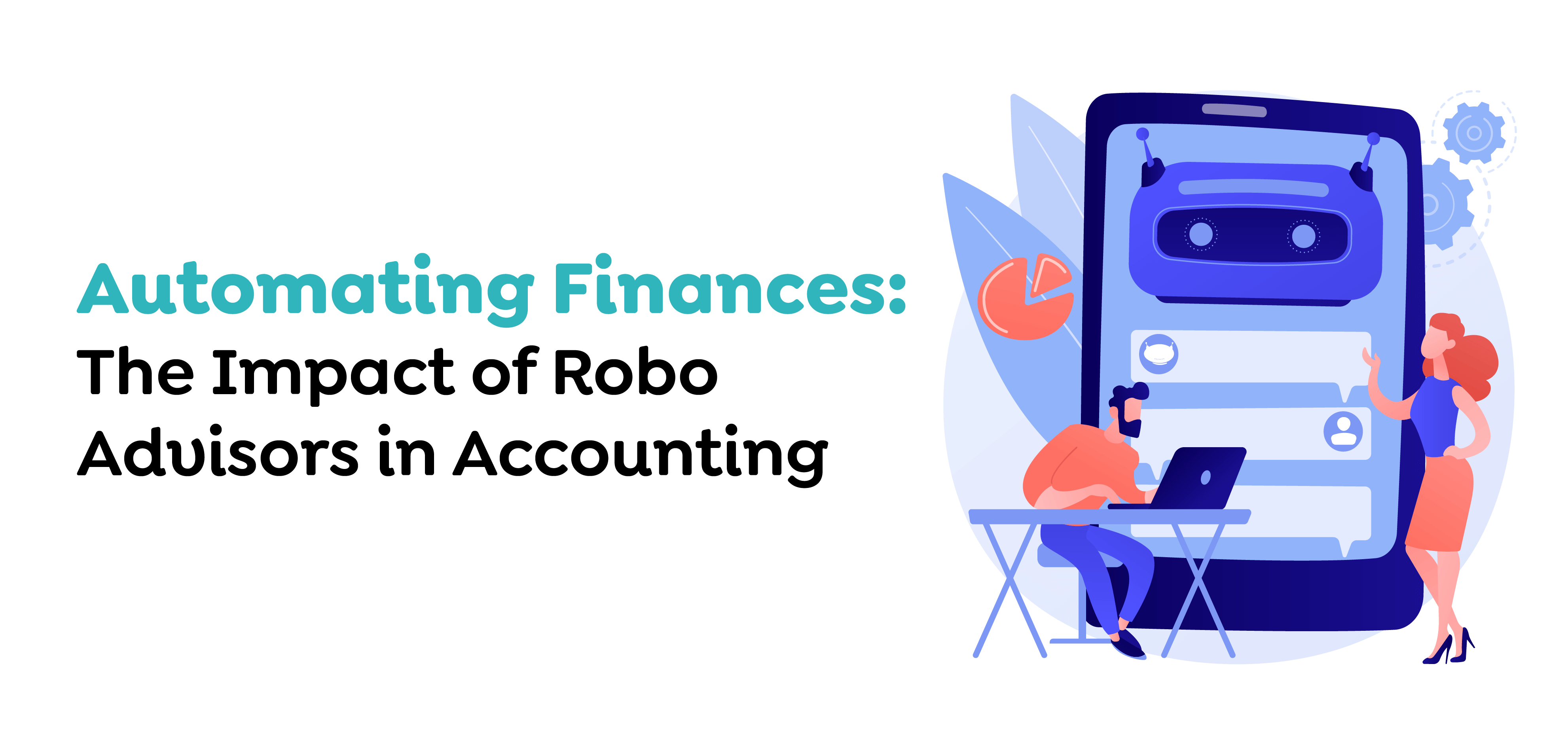Write Us
We are just a call away
[ LET’S TALK AI ]
X
Discover AI-
Powered Solutions
Get ready to explore cutting-edge AI technologies that can transform your workflow!


In the ever-changing field of financial technology, there is one common question asked by everyone, What is Robo-Advisor?
So, the answer is here: the platform stands out as a disruptive innovation that can change the entire financial industry. According to Statistics of previously available data, the robo-advisor industry is expected to reach $1,802 billion by 2024, with an annual growth rate of 8.06%. The spike in favour emphasizes the strategic importance of organizations engaging in robo-advisor platform development.
Without further ado, Let’s take a look at what is robo advisor and how do they work!

A Robo-Advisor is a computerized investment platform that utilizes algorithms, artificial intelligence, and machine learning. Its primary purpose is robotic finance management, particularly beneficial for newcomers or those with smaller portfolios. The platform’s functioning involves investor input, algorithmic portfolio creation, and continuous monitoring and adjustments, relieving investors of the constant burden of making investment decisions.
In this blog we also talk about, What is financial robo advisor?
Investment companies in robo-advisor development enjoy functional efficiencies, data-driven insights, and better client interactions. The advantages include low-cost solutions, no minimum account balances, real-time analytics and suggestions, emotion-free decision-making, and comprehensive documentation. Robo-advisor is in the healthcare industry to streamline data analysis, optimize treatment plans, and enhance patient care, promoting efficient and personalized medical solutions.
Robo-advisor fora provides a variety of characteristics that set them apart in the field of automated investment. These include automated rebalancing, portfolio management, risk forbearance assessment, investment allocation, investment analytics, tax failure harvesting, diversification, investor education, rebalancing, and tax optimization.Blockchain technology in robo advisors offer automated portfolio management, real-time market analysis, secure transactions, and decentralized decision-making for optimal investment strategies.
To build an effective robo-advisor, key components such as frontend for customers, money management algorithms, financial Application programming interfaces, backend system management, and a portal for partners must come together. These components ensure a streamlined financial platform serving each client effectively.
The process involves a discovery phase, proof of concept, design, development, and deployment with ongoing maintenance. A dedicated fintech app development company is recommended to bring specialized focus to the robo-advisor platform, ensuring optimal development and implementation.
The cost of developing the fintech platform can depend on various factors like white-label components or custom development, integration with existing banking infrastructure, number and type of front ends, and addition of specific features.

As robo-advisors continue to evolve, incorporating advanced features is crucial for enhancing their effectiveness. Here are additional features that contribute to making robo-advisors more impactful:
Merging smart goal-based investing lets robo-advisors assist investors in setting specific financial goals. The platform considers factors such as the expected retirement age, major life events, or education expenses, providing tailored acquisition strategies aligned with these goals. This feature enhances the platform’s ability to deliver personalized and relevant financial guidance.
Including Socially Responsible Investing (SRI) attributes allows users to align their assets with honourable and socially responsible criteria. Robo-advisors can analyze companies established on environmental, social, and governance (ESG) factors, allowing investors to donate to causes they believe in. This feature caters to the growing demand for sustainable and socially conscious investment options.
Also Read – HOW TO PREDICT THE RETURN ON INVESTMENT ON YOUR APP???
Industrious risk adjustment goes beyond a stagnant risk forbearance assessment. This feature allows robo-advisors to evaluate market conditions, economic trends, and geopolitical events, adjusting the investment portfolio’s risk profile in real-time. This feature improves risk management procedures and helps investors navigate volatile periods more effectively by guaranteeing a proactive response to changing market dynamics.
Including personalized monetary education modules within the robo-advisor platform allows users to improve their financial literacy. Tailored content, such as reports, videos, and interactive modules, educates investors on various economic concepts, investment strategies, and market trends. This feature promotes informed decision-making, empowering users to actively participate in shaping their financial future.
Enabling integration with external financial apps allows robo-advisors to provide a comprehensive view of users’ financial lives. By connecting to budgeting apps, expense trackers, or other financial tools, the robo-advisor gains insights into users’ complete financial picture. This integration facilitates more informed investment recommendations, considering the broader context of users’ financial situations.
Dynamic withdrawal strategies address the complexities of income distribution during retirement. By considering factors like market conditions, life expectancy, and changing financial goals, robo-advisors can dynamically adjust withdrawal plans. This feature ensures that retirees receive a consistent income stream while adapting to evolving financial needs, contributing to a more secure retirement experience.
Incorporating advanced security measures, such as biometric authentication, multi-factor authentication, and encryption protocols, strengthens the platform’s resilience against cyber threats. Enhancing data security builds trust among users, assuring them that their financial information is safeguarded. This feature is crucial for fostering user confidence and maintaining the platform’s integrity
Integrating predictive analytics allows robo-advisors to analyze historical data and market trends to make informed predictions about future movements. By leveraging machine learning algorithms, the platform can offer insights into potential market shifts, helping investors make strategic decisions. This forward-looking feature enhances the platform’s analytical capabilities, providing users with valuable foresight.

In the realm of account, robo-advisors play a significant role in automating various financial tasks, offering efficiency, accuracy, and data-driven insights. Here’s a comprehensive overview:
Robo-advisors in account refer to automated financial management solutions that utilize algorithms, artificial intelligence, and machine learning to perform account tasks. These tasks include bookkeeping, expense tracking, financial analysis, and even decision-making processes. By leveraging technology, robo-advisors streamline account workflows, reduce manual efforts, and enhance overall financial management.
Account-based robo-advisors are meant to execute a variety of roles and tasks:
The integration of robo-advisors in account brings forth several benefits:
The implementation of robo-advisors in accounting firms involves:
Despite their benefits, accounting robo-advisors face the following challenges:
Future trends in robo-advisors in accounting include:

Hybrid robo-advisors offer a dynamic approach to investment management by mixing automated algorithms with human knowledge. This revolutionary financial solution combines technology-driven efficiency with the personal touch of human understanding.
Let’s go into the definition using organized headers.
Hybrid robo-counselors are financial advice systems that combine automated algorithms and artificial intelligence with human financial advisors. Unlike classic robo-advisors, which rely purely on computers, hybrids achieve a balance by including a human element. This dual strategy attempts to improve the overall quality of financial advice by offering users a more personalized and sophisticated investment experience.
Hybrid robo-advisors have the following key characteristics:
The hybrid robo-advisor model presents several advantages:
The implementation of hybrid robo-advisors involves:
Challenges associated with hybrid robo-advisors include:
Future trends in hybrid robo-advisors may include:
Also Read – How does an Artificial Intelligence App add Great Potential to your Business?
Customized robo-advisor platform development by Techugo, a top fintech app development company has the potential to revolutionize the financial industry. Their expertise ensures a seamless integration of cutting-edge technologies for a robust and future-ready solution. Techugo’s software development services align with specific needs and objectives, transforming financial services and enhancing both customer experiences and business outcomes.
Write Us
sales@techugo.comOr fill this form